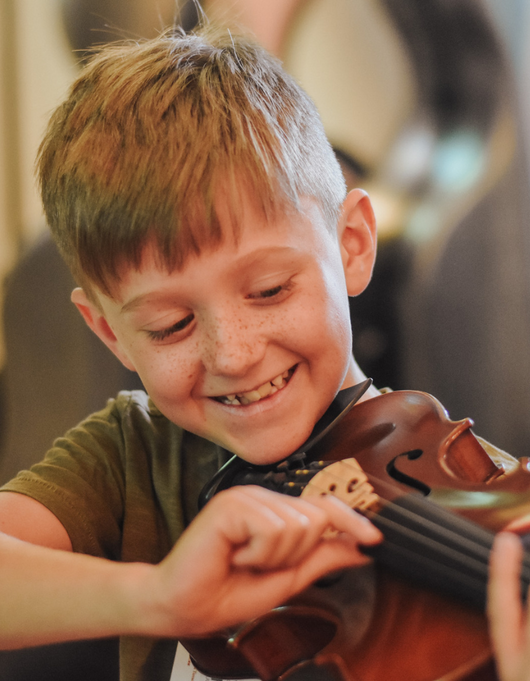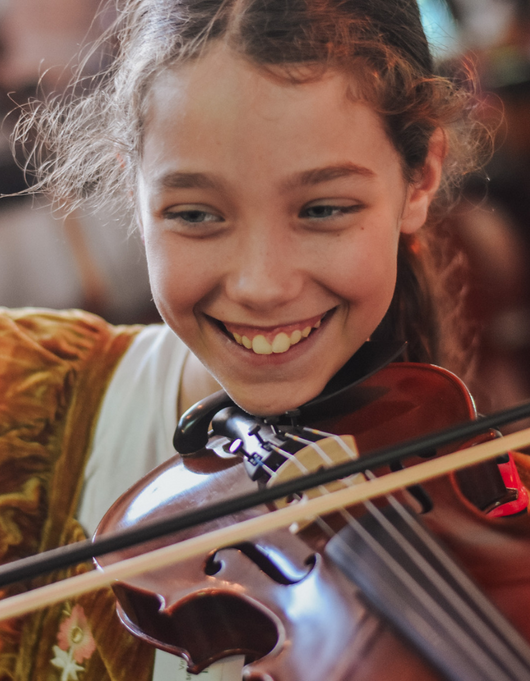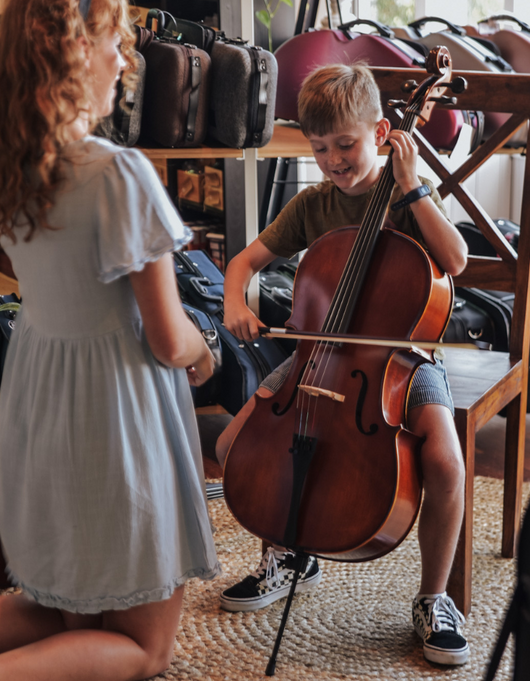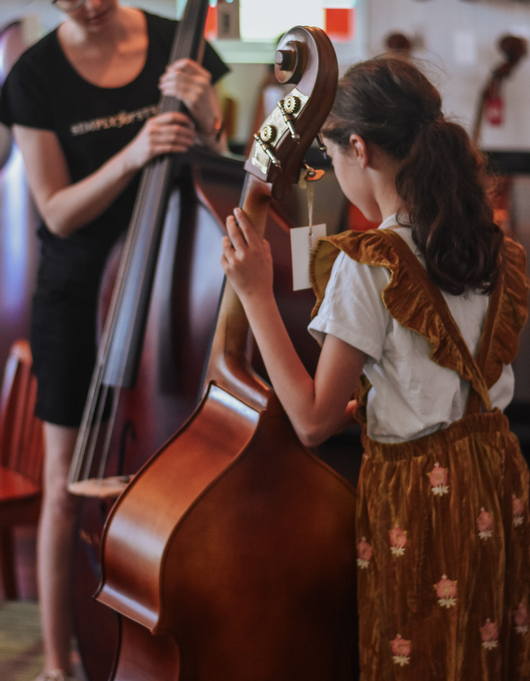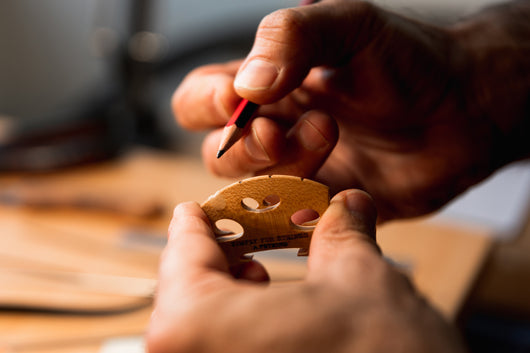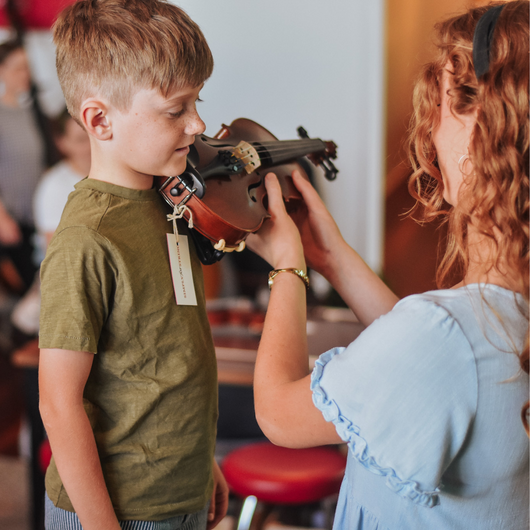Behind the Bow: Inside L'Archet Brasil's Workshop
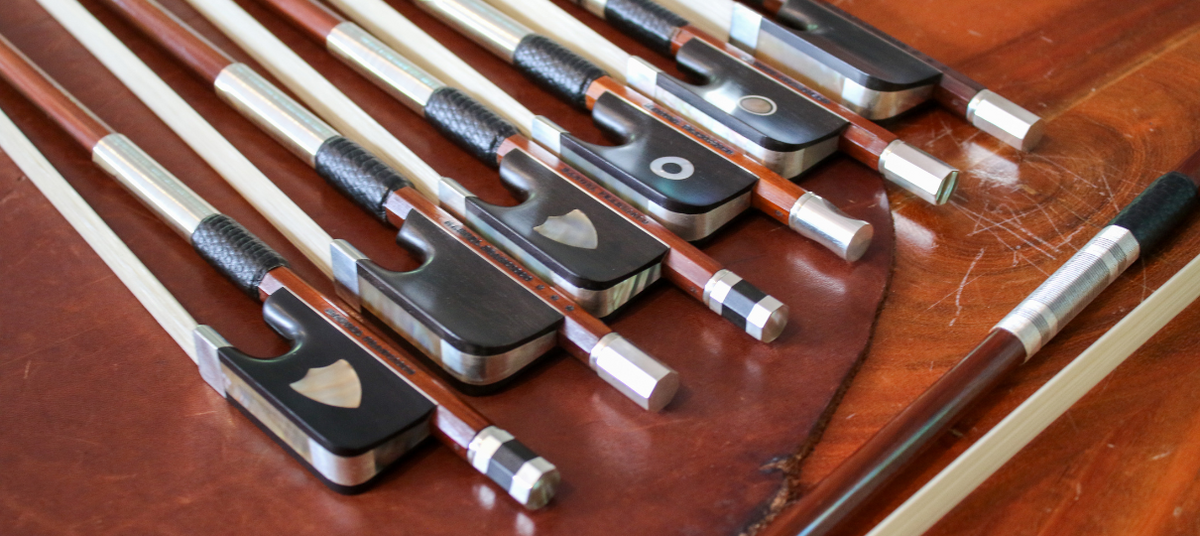
At Simply for Strings, we are passionate about curating the finest quality bows for our customers. We are constantly on the look out for bows that embody the perfect blend of outstanding craftsmanship, great playability and exceptional sound. That's why we are thrilled to showcase a selection of L'Archet Brasil bows in our collection.

Pictured: Anna (Simply for Strings Founder and Director), Eberson (L'Archet Brasil Sales Consultant)
When was L'Archet Brasil founded, and what inspired its establishment?
L’Archet Brasil was founded in 2004 in the United States. It started out of a desire to distribute bows from several workshops in Brazil that we recognised the quality of the work, but that had difficulty in reaching musicians overseas. The idea was for them to keep their independence and for L’Archet Brasil to showcase their production.
How has the company evolved since 2004?
From our basis in the United States, we expanded to have headquarters in Europe, Portugal specifically, in 2015. Finally, in 2018 we opened offices in Tokyo, Japan, to be able to reach the Asian market more easily. In 2021 we started our own workshop in Portugal, where we are now making bows for some specific markets. This has been a departure from our business model that focused exclusively in working with independent bowmakers, to have some of the production in house.
What makes L'Archet Brasil unique compared to other bow makers?
We are uncompromising when it comes to quality and customer service. The variety of workshops that we work with also gives a great range of models that ensure that we have something for every musician.
How many bow makers work for L'Archet Brasil?
Now, we work with about 14 bowmakers in Brazil divided in three different workshops. In Portugal we have five bowmakers working and teaching three apprentices.
Can you describe the training process for new bow makers at L'Archet Brasil?
The process is very hands-on. The apprentice starts by learning how to “prepare” a stick. That is to say, they learn the fundamentals of using tools, cambering, rehairing and so on. After the basics are mastered they will begin making bows from start to finish.

Can you tell us about the current situation with Pernambuco wood and its availability?
Pernambuco wood is listed on the Appendix II of the CITES. This means that the commercialisation of raw wood is prohibited and pretty much the only trade exception is for bows. At the last CITES meeting, the Brazilian government advocated for the escalation of the classification to the Appendix I. Since Pernambuco wood only grows in the Brazilian northeastern-southeastern coast this request had huge impact on the trade. The change of status would impose severe restrictions of all trade of Pernambuco bows, effectively making it impossible to travel with a bow made out of Pernambuco.
There was an international counter movement of bowmakers, violin makers and musicians to stop this, under the argument that it would destroy one of the main pillars of classical music, without ensuring the preservation of the species. The measure didn’t go through, and Pernambuco was kept on Appendix II. However, the Brazilian government insists that the prohibition is essential for the survival of the species and has forbidden all trade of Pernambuco bows coming from Brazil, effectively shutting down the industry in Brazil. As a reaction, the bowmakers over there started looking for alternatives, Ipe wood being the main one found. Ipe has since 2021 been the main category of bows that L’archet Brasil sells, having found huge success introducing this wood in the market. There will be a new CITES meeting next year and the Brazilian government has said it will again request the change of Pernambuco from appendix II to I.
What Pernambuco alternatives do you use at L'Archet Brasil, and how do they compare in terms of quality and performance?
The production in Brazil has completely shifted to Ipe wood. Honestly, the introduction of this wood in the market has been much easier than we expected. Pernambuco has around 250 years of history being used as the main wood for high quality bows, it was a huge challenge for us.
However, the Ipe bows were very well and quickly accepted as an alternative. I think there is an understanding that the situation of Pernambuco is not sustainable in the long run, and everyone will be forced to challenge preconceived notions of what is or isn’t used in bowmaking. In terms of quality and performance there is more of psychological barrier to other woods than a real difference. In blind tests with Ipe and Pernambuco the results of preference have been so random that it is impossible for us to say if one works better than the other. At the same time, the workshop in Portugal is being used as laboratory where we are testing several different woods, with some showing a lot of promise.
How do you ensure the quality of the materials used in your bows?
All the sticks go through an initial test with the Lucchi Meter, a machine that measures the speed of propagation of sound though the wood. We are looking for woods that have a faster sound propagation. Afterwards we test its viability in making a bow, if its flexible, retains camber and so on. Finally we test all new woods for sound quality.

Pictured: Josh (Showroom Manager) trialling new L'Archet Brasil bows for the Simply for Strings collection.
Can you walk us through the process of creating a bow?
We divide the process of creating a bow in four steps. It all starts with the raw wood. We analyze the planks and determine where the sticks will be cut from. The second step is “preparing” the stick. This is the process of giving it its first octagonal shape, rough shaping the head, and giving it its first camber. Next, it’s the making of the bow itself. At this point the bow will be rounded or kept octagonal, the final camber will be shaped, the head will be cut, and the hair will be installed. Finally, the bow goes to varnishing and lapping. A final review is made and the bow is ready to be shipped.
How has modern technology influenced the traditional craft of bow making at L'Archet Brasil?
Not a lot honestly, we keep things very handmade still. We mostly use machines on the “preparation” of the stick stage. This stage is more akin to woodworking, so a lot of saws and mills and so on. But afterwards the bow is almost entirely made by hand.
Are there any new techniques or innovations that your team has recently adopted?
In our search for a more sustainable future, we have started using alternative materials in some parts of the bows. We have been using Elforyn for the tips, for example. This is an extremely high-quality imitation of ivory which is wonderful to work with. We have also started working with Sucseno in some of our bows, a viable alternative for ebony in the frogs.
What are your goals and vision for the future of L'Archet Brasil?
We will keep striving to be able to provide the market with high quality and affordable bows. The main goal from now on is to do it in a even more sustainable way. Considering that the future of wooden bows is uncertain we need to do our best to find alternatives to keep this art alive. Carbon bows are an alternative, but there is no art involved in it, it is a mechanical and industrial process. They work to a certain point, but we lose a lot of what makes a bow such a beautiful instrument.
What is the most rewarding aspect of being a part of L'Archet Brasil?
As you know, we are a wholesale company. We don’t work directly with musicians, but I have lost count of the amount of emails I have received over the year from musicians asking me to thank the maker of their bows for the amazing work. I would say this is the most rewarding aspect, knowing that you made an impact in someone’s life, be it in their hobby or their career, and that they are happy with their bows.



